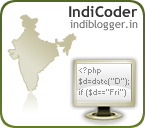Booth's Algorithm:
It is a powerful algorithm for signing up a number of multiplication. It generates a 2n bit product and it treats both +ve & -ve number uniformly.
Booth's multiplication algorithm is a multiplication algorithm that multiplies two signed binary numbers in two's complement notation. The algorithm was invented by Andrew Donald Booth in 1950 while doing research on crystallography at Birkbeck College in Bloomsbury, London. Booth used desk calculators that were faster at shifting than adding and created the algorithm to increase their speed. Booth's algorithm is of interest in the study of computer architecture
IEEE Floating point representation:
The standard defines:
1. arithmetic formats: sets of binary and decimal floating-point data, which consist of finite numbers (including signed zeros and subnormal numbers), infinities, and special "not a number" values (NaNs)
2. interchange formats: encodings (bit strings) that may be used to exchange floating-point data in an efficient and compact form
3. rounding rules: properties to be satisfied when rounding numbers during arithmetic and conversions
operations: arithmetic and other operations on arithmetic formats
4. exception handling: indications of exceptional conditions (such as division by zero, overflow, etc.)
Booth Algorithm & IEEE representation
It is a powerful algorithm for signing up a number of multiplication. It generates a 2n bit product and it treats both +ve & -ve number uniformly.
Booth's multiplication algorithm is a multiplication algorithm that multiplies two signed binary numbers in two's complement notation. The algorithm was invented by Andrew Donald Booth in 1950 while doing research on crystallography at Birkbeck College in Bloomsbury, London. Booth used desk calculators that were faster at shifting than adding and created the algorithm to increase their speed. Booth's algorithm is of interest in the study of computer architecture
IEEE Floating point representation:
There are several ways to represent real numbers on computers. Fixed point places a radix point somewhere in the middle of the digits, and is equivalent to using integers that represent portions of some unit. For example, one might represent 1/100ths of a unit; if you have four decimal digits, you could represent 10.82, or 00.01. Another approach is to use rationals, and represent every number as the ratio of two integers.
Floating-point representation - the most common solution - basically represents reals in scientific notation. Scientific notation represents numbers as a base number and an exponent. For example, 123.456 could be represented as 1.23456 × 102. In hexadecimal, the number 123.abc might be represented as 1.23abc × 162.
Floating-point solves a number of representation problems. Fixed-point has a fixed window of representation, which limits it from representing very large or very small numbers. Also, fixed-point is prone to a loss of precision when two large numbers are divided.
Floating-point, on the other hand, employs a sort of "sliding window" of precision appropriate to the scale of the number. This allows it to represent numbers from 1,000,000,000,000 to 0.0000000000000001 with ease.
The IEEE Standard for Floating-Point Arithmetic (IEEE 754) is a technical standard for floating-point computation established in 1985 by the Institute of Electrical and Electronics Engineers (IEEE). Many hardware floating point units use the IEEE 754 standard. The current version, IEEE 754-2008 published in August 2008, includes nearly all of the original IEEE 754-1985 standard and the IEEE Standard for Radix-Independent Floating-Point Arithmetic (IEEE 854-1987). The international standard ISO/IEC/IEEE 60559:2011 (with identical content to IEEE 754) has been approved for adoption through JTC1/SC 25 under the ISO/IEEE PSDO Agreement and published.The standard defines:
1. arithmetic formats: sets of binary and decimal floating-point data, which consist of finite numbers (including signed zeros and subnormal numbers), infinities, and special "not a number" values (NaNs)
2. interchange formats: encodings (bit strings) that may be used to exchange floating-point data in an efficient and compact form
3. rounding rules: properties to be satisfied when rounding numbers during arithmetic and conversions
operations: arithmetic and other operations on arithmetic formats
4. exception handling: indications of exceptional conditions (such as division by zero, overflow, etc.)
Booth Algorithm & IEEE representation
You can download the C++ programs for Booth's algorithm & IEEE representation from the download box present alongside.














0 comments:
Post a Comment